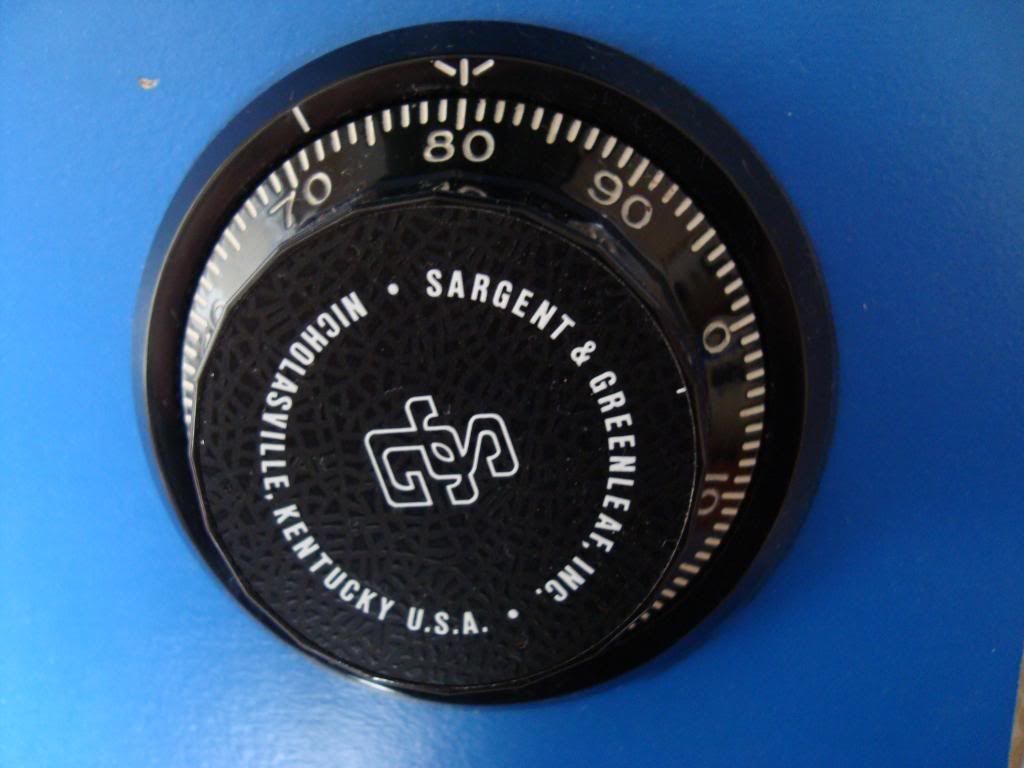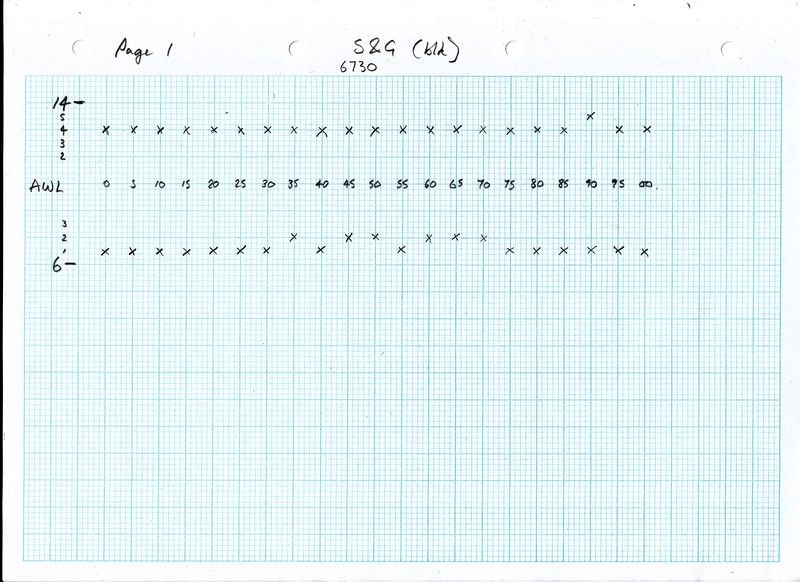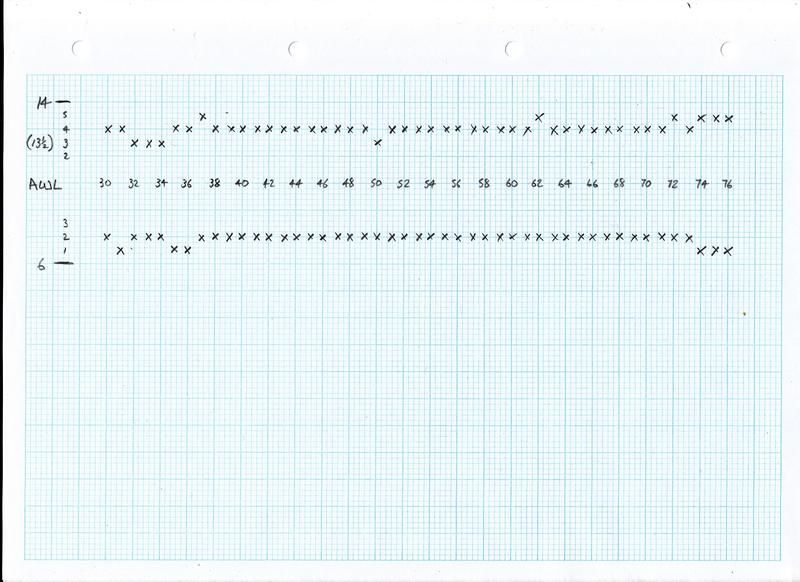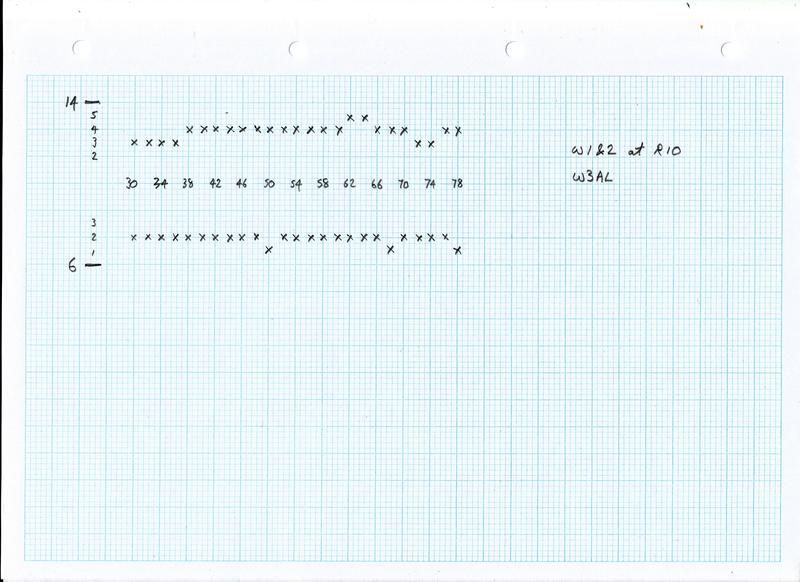Page 1 of 3
joining in with the spinning

Posted:
Fri Jun 26, 2015 5:03 amby capt-dunc
hi guys, been working on manipulation for a while now, it's great to have somewhere to talk about it. been following oldfast's chronicles and feel i'm getting close to popping a lagard, that's been teasing me, by trying new approches.
i couldn't decide what to give back to the forum, untill now. a team spin along. rather than a finished opening, i've done a first graph and i'd like people to chip in as to what to do next. i'll take one of the suggestions and dial it and post it here, repeat as needed till we're open. hopefully this'll give new spinners an idea of options and how they sometimes workout or lead to dead ends.
so the lock is an s&g 6730, 3 wheels, last number not in the forbidden zone

the starter graph is AWL every 5 numbers, note; i read in 1/6's, so below 14 on the graph we have, 13 and 5/6, 4/6, 3/6 etc.

enjoy
Re: joining in with the spinning

Posted:
Fri Jun 26, 2015 6:25 amby capt-dunc
ps i'm happy to dial in all right or left combinations or park wheels etc.
pps i hope that perhaps there are some people lurking reading the manipulation threads who don't have a lock but are keen to learn, this is your chance to chip in.
and obviously if anyone has any questions as we go just ask.
dunc.
Re: joining in with the spinning

Posted:
Fri Jun 26, 2015 7:19 amby femurat
Nice idea. I would have tested the wheels every 2.5 increments, but it's too late for this suggestion.
So why don't you make a graph AWL checking every increment between 75 and 30? This way you could find the three possible gate centers.
Then you should perform a quick test with the three found numbers to see if the lock opens!
If this fails, do proper hi-low tests to determine which gate is on what wheel.
Cheers

Re: joining in with the spinning

Posted:
Fri Jun 26, 2015 7:33 amby capt-dunc
cheers femurat, i'd deliberately gone in 5 step intervals to leave the option of fine dialing, i like the fact you think shoot for glory, and aim for three gates and brute force the order. lets see if anyone else has a different course of action to suggest. before spinning on
Re: joining in with the spinning

Posted:
Fri Jun 26, 2015 7:40 amby femurat
Yep, it makes sense. I once went every 10 increments but got no luck. Turned out that 5 increments could have been enough...
Sure, wait for others to participate!
Cheers

Re: joining in with the spinning

Posted:
Fri Jun 26, 2015 10:39 amby capt-dunc
femurat; only tried every 10 once as well, but i was just looking to identify general high and low spots to begin parking. worked well and was quick, think it's an approach i'd use for starting on erratic wheel packs, and for my lagard i'm seeing the value of looking for high spots as well as trying to park lower and lower, the wheels on mine all have raised sections by the gate (which hides on the hill) and to the outside of these raised areas the wheel drops back down enough to look like a false gate.
Re: joining in with the spinning

Posted:
Fri Jun 26, 2015 2:15 pmby jharveee
Think I'd park wheels 1 and 2 R10(forbidden zone), Spin wheel 3 AL every 2 increments, Starting on 30 going to 75.
The gate on wheel three should pop out. Amplify to find center of gate.
Re: joining in with the spinning

Posted:
Fri Jun 26, 2015 7:24 pmby mercurial
I'd feel very puzzled that the left contact point is showing so much movement, and the right one is mostly stable, when the opposite should be the case.
So I'd repeat the graph (without looking at this one), whilst ensuring I approach the contact points gently, trying to be keenly aware of the moment of contact.
The shape of the drive cam gate on at the right contact point is such that the moment of contact can be difficult to detect without practice. The lever nose is often driven up the gradual slope of the drive can, past the actual moment of contact.
The shape of the drive cam gate at the left contact point means it is a lot easier to measure accurately.
Perhaps you should pop the back off this lock, dial until you feel the right contact point, and then take a look to see if you overshot it. If you are overshooting, you are losing a GREAT deal of information.
Welcome to the forum, great to have another spinner on board!
...Mark
Re: joining in with the spinning

Posted:
Sat Jun 27, 2015 5:08 amby capt-dunc
mercurial; i would also of expected a bit more variation at the high contact, but remember this graph is in 5's and it may show with finer dialing (the 6730's are closer tolerances than the 6740's). i've opened this lock several times so i'm happy with my reading of the points, but a good point for beginners to consider.
Re: joining in with the spinning

Posted:
Sat Jun 27, 2015 6:05 amby mercurial
Even when reading every 5 increments, this should not happen. The more gradual slope of the drive cam gate at the right contact point means it really must show larger readings than the left contact point. The more gradual slope also makes this contact point a lot softer, and it is much easier to overshoot.
Look at the shape of the drive cam gate - it should be obvious that the gradual slope at the right contact point means that the dial reading will change more at this contact point as compared to the left for the fence dropping given amount. The geometry of the drive cam gate makes it so. I have completed countless manipulations, and I have NEVER seen an exception to this on a lock with this shape of drive cam.
There are locks with a different shaped drive cam gate - in those instances, things may be different.
It is possible that you are reading contact points consistently, but with a heavy hand, or a less refined touch. If you were doing this, you may well get successful manipulations, just from the information derived from the left contact point readings. If that is the case, you will really struggle once you encounter locks with closer tolerances - including other 6730s.
Take a look at the graphs on this site and elsewhere - on a S&G 6730, the right contact point shows more movement than the left.
I strongly suggest that you try what I suggested above with the lock cover off.
...Mark
Re: joining in with the spinning

Posted:
Sat Jun 27, 2015 7:40 amby Oldfast
capt-dunc wrote:.....and feel i'm getting close to popping a lagard, that's been teasing me, by trying new approches.
In case you haven't come across
Altashot's theory for ovular wheels and the 'shadowing' affect they have.
I started working with it once, but haven't fully explored it. I myself have alot of work to do yet with LaGard.
capt-dunc wrote:.....i couldn't decide what to give back to the forum, untill now. a team spin along.
rather than a finished opening, i've done a first graph and i'd like people to chip in as to what to do next.....
Thanks for posting. Should be interesting.
I too am surprised at the lack of fluctuation you're receiving from the RCP.
And I agree readings should really be taken no more than every 2.5 incs.
That being said...
if you decide to roll with what you've done so far:
Then yeah, I'd focus your efforts between 30 & 75.
Re: joining in with the spinning

Posted:
Sat Jun 27, 2015 8:06 pmby capt-dunc
ok i've got 3 replies:
for femurat, i've run AWL 1 number at a time
for jharveee, i've done w1&2 10R, W3AL
for mecuial...
i've re checked the original graph at 25, 45, 65, 85 dialing from the front and looking at the contact, and dialing blind looking at the cam, then taking the reading after. i'd chosen these points since they are around the spread of the wheel and they are 2 narrow and 2 wide points on the the graph. all the results were as above. you made me doubt myself, and that is good, but, i know why the results are as they are, and are correct as results.
the follow on graphs that i've done following femurat and jarvheee's suggestions back up the intial readings as being correct as well.
SO, A QUESTION FOR THE PRO's... can you see why the graph is correct, whilst considering what mecurial's said about L & R indications? (it's something that i'd not seen writen or considered, but is correct scientifically).
i'll post the new graphs tomorrow, but leave it a couple of days to look at why mecurial may be wrong. all the information for that, is above in this thread.
i look forward to the replies, and the mecurial reading problem, was a new form of questioning. new graphs torommow and we'll all face the next challange.
dunc x
Re: joining in with the spinning

Posted:
Sun Jun 28, 2015 8:15 amby jharveee
Not a PRO,
But would like to play along, if no one minds.
Perhaps there is a defect or modification on the right hand side of your Drive cam.
On your first graph at 90 is a reading I brushed off as dialing error, now I think this is the only time you were able to overcome the defect of the cam and get a true reading.
Re: joining in with the spinning

Posted:
Sun Jun 28, 2015 1:39 pmby capt-dunc
no jharveee, the cam and nose are fine.
for femurat, i've run AWL 1 number at a time

for jharveee, i've done w1&2 10R, W3AL

i've not run a high low test from AWL yet since the second aproach would suggest 72 for W3. interesting to see that one technique would lead us towards 33 on an unknown wheel and the other leads to 72 on a known wheel.
so what next, high low tests for 33, or press on with a new graph with 72 ish parked on W3?
Re: joining in with the spinning

Posted:
Sun Jun 28, 2015 3:48 pmby femurat
I like this new game.
I'd dial 33 50 73 and 50 33 73. Don't forget to oscillate the dial to try to make up for non perfectly aligned gates.
If this approach fail, I would try a high low test with 33 43 73 and 43 33 73 and then 23 33 73 and 33 23 73.
About the two methods that give different results, with my approach I see three possible gates with just one graph. The gate signature at 73 is the most difficult to recognise, but it's there.
Cheers






